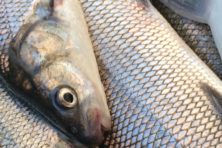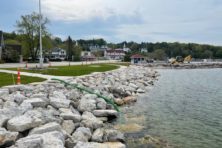DNR Seeks More Input on Whitefish
- Share
- Tweet
- Pin
- Share
To address concerns expressed by stakeholders during initial meetings on the commercial and recreational management of Lake Michigan whitefish, the Wisconsin Department of Natural Resources will host a round of meetings the second week of January to find areas of agreement through which a sustainable harvest framework can be developed.
David Boyarski, DNR eastern district fisheries supervisor, said efforts to begin developing new harvest rules will be put on hold until additional public feedback and information can be gathered. Results from stakeholder meetings held in May and subsequent comments collected by the department showed the need to gather more data on whitefish populations, explore the potential for new methods to monitor harvests and find ways to improve dual use of waters where both sport and commercial fishers pursue whitefish.
The January meetings to help find a balance between recreational and commercial interests represent a separate process from the December effort to initiate harvest reporting by Green Bay ice fishing guides who target whitefish. Both efforts by DNR reflect the growing public appeal of whitefish and demonstrate the department’s commitment to gathering data and involving stakeholders in the decision making process.
“Whitefish populations in Lake Michigan and Green Bay represent an incredible recreational, economic and biological asset and we appreciate stakeholders’ strong interest in our management of the resource,” Boyarski said. “We would like to reach consensus on the information needed and a management framework that all stakeholders can accept to help sustainably manage this shared resource. This next round of meetings on Jan. 10 in Green Bay and Jan. 11 in Sturgeon Bay will focus on finding areas of agreement that will allow us to develop an agreed-upon framework to sustain this critical species for current and future generations.”
Whitefish populations have changed drastically over the past two decades. Green Bay whitefish populations have increased with many younger year classes present while certain Lake Michigan populations have decreased. Presently, fewer young fish appear to be returning to northeastern Door County to spawn, which may indicate future challenges for that population.
Currently, the commercial whitefish harvest for Lake Michigan and Green Bay is set at 2.88 million pounds, a level established through calculations based on a sustainable harvest of 35 percent of the population’s most vulnerable age class. Approximately 12.5 percent or 362,185 pounds may be taken from Zone 1 in Green Bay south of Chambers Island; roughly 75 percent or 2,166,329 million pounds may be taken from Chambers Island north around the top of Door County to Kewaunee; and 12.2 percent or 351,487 pounds may be taken south of Kewaunee.
Commercial fishers are now bringing in substantially less than the overall quota due to reduced populations in Zone 2 and other factors such as overall effort and environmental conditions. However, a strong recreational whitefish fishery has emerged in Green Bay with an annual harvest of more than 100,000 fish for each of the past four years.
“It was clear from the feedback we received that many stakeholders are not comfortable moving forward with specific rule changes at this time but they do want to know more about the commercial fishery, sport fishery and changes in whitefish populations,” Boyarski said.
Both meetings will be held from 6 to 8 p.m. The Jan. 10 meeting will be at the DNR Green Bay Service Center, 2984 Shawano Ave., Green Bay, in the Lake Michigan Room. The Jan. 11 meeting will be at the Door County Government Building, 421 Nebraska St., Sturgeon Bay, 54235.
Boyarski said stakeholders also will be encouraged to participate in an online survey identifying preferences for management of the fishery. The survey will be launched after the first meeting, with a link accessible through dnr.wi.gov and the search “Lake Michigan whitefish management.” Information presented at the May stakeholder meeting also is available on this webpage.



